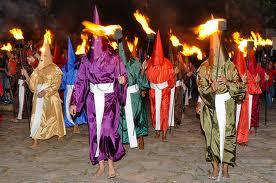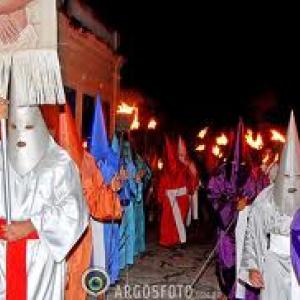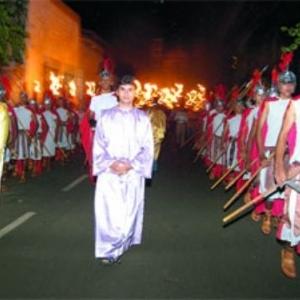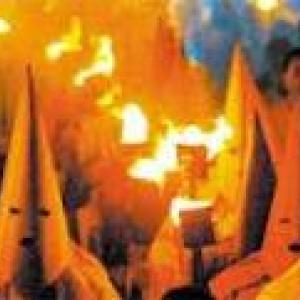The procession staged the arrest of Jesus Christ and opened at 0:00 on Wednesday saint, with off street lighting and the sound of drums, the door of the Church of the Good Death, the city's main square. The penitents, dressed in special costumes and representing Roman soldiers, then follow the steps to the Church of N. S. the Rosary, where they find the table of the Last Supper has dispersed. Then, advancing towards the Church of St. Francis of Paula, who symbolizes the Garden of Olives, where will the arrest of Christ. This is represented by a standard linen painted on both sides, the work of nineteenth-century artist Veiga Valle.
The Procession of the blaze was introduced by the Spanish priest in Goiás Perestelo de Vasconcelos, in the mid-eighteenth century. The clothing used by penitents characterized by a long robe with a long hood and and tapered, pointed, keeping strong similarities with clothes that are still common in the celebrations of Holy Week in Spain. [1] It is, indeed, of a suit of medieval origin, which was customarily used by penitents who atone for their sins so they could without having to publicly reveal his identity.










Comments 4
Say something